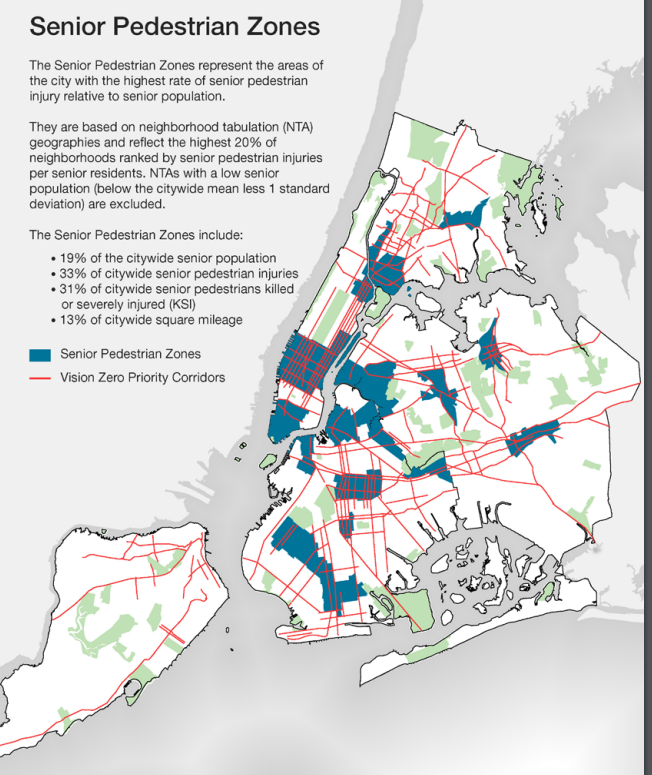The NYC DOT plan to prevent senior pedestrians from getting killed in car accidents would take 800 years to be finalized
 In New York City, 45% of the pedestrians who die in a car accident are seniors while they make up only 15% of the total population of the city.
In New York City, 45% of the pedestrians who die in a car accident are seniors while they make up only 15% of the total population of the city.
10 years ago senior pedestrian fatalities represented 33% of all pedestrian fatalities, but their numbers are gradually growing and as a result senior pedestrian fatalities are representing a higher percentage of all pedestrian fatalities than they used to.
The DOT wants to address this problem and yesterday, DOT Commissioner Ydanis Rodriguez visited a senior center in Washington Heights to announced the release of an extensive study about senior pedestrian fatalities and a plan to prevent them.
The study found that since Vision Zero started the number of pedestrian fatalities globally decreased but remained mostly flat for senior pedestrians. The study also found that one of the reasons why more senior pedestrians are dying in car accidents is not that more senior than younger pedestrians are getting hit but that senior pedestrians are more fragile and have a higher risk to die than a young pedestrian when they are struck by cars. Senior pedestrians are especially vulnerable in left turn accidents and in backing up accidents and their risk to die is twice higher than younger pedestrians in these types of accidents. Senior pedestrians are usually killed near their home and during day time.
The DOT study identified senior pedestrian zones which are zones in the city with a high density of senior population and a high number of senior pedestrian injuries and deaths. The DOT will focus on improving safety in these particular zones. Ironically, the senior center where the DOT Commissioner made the announcement yesterday is located in a zone that was not identified as a senior pedestrian zone.
Among the measures proposed, the DOT will extend and add exclusive pedestrian crossing time with a focus on priority corridors located in senior zones (priority corridors have been previously identified by Vision Zero as some of the most dangerous streets in New York City). The DOT also announced that it would implement turn-calming treatments at a rate of 50 intersections per year. Street safety advocate quickly did the math and found that at this rhythm it would take 800 years to the DOT to make NYC streets fully safe for senior pedestrians.
Read more in Street Blog
Download the DOT Study
 New York Personal Injury Attorneys Blog
New York Personal Injury Attorneys Blog


